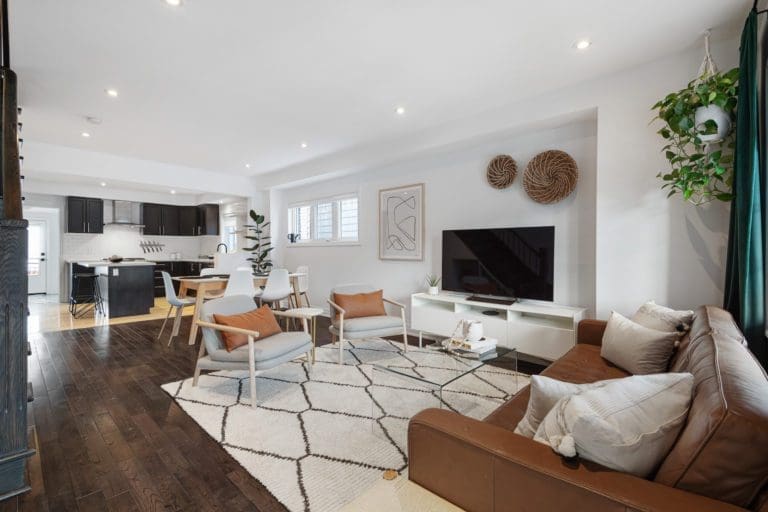1 – Toss The Stuff
Everyone loves stuff (free stuff, cool stuff, old stuff). Most of that stuff is distracting for buyers. Donate, dispose, or store things so they are not in your condo. It will reduce the condo’s value because a buyer wants to picture their own things in the space. If you toss your stuff before you sell, a buyer will pay more. When you sell, you have to provide an empty ‘broom swept‘ condo anyway. Get to work!
2 – Prep It
This can include a lot of ideas but one of the most important is maintenance items. Maybe you have a leaky kitchen faucet or a unit that hasn’t been painted in 10 years. Even a crack in the mirror. For small things that are inexpensive, a buyer will want a larger discount. We try to eliminate the negatives in real estate. This is also a great time to also do a deep clean. Buyers make impressions based on all the senses; what they smell, see and touch.
3 – Stage It
Once you have a clean and fresh condo, staging goes a long way. Most condos only need a small amount of furniture, art pieces on the wall and good lighting. Maybe you have larger ‘house sized’ furniture that needs to be swapped out. Staging is a small nuisance, but has been proven to put more money in your pocket.
4 – Pick a Strategy/Price
We find sellers do the majority of negotiating their condo value when in deciding listing price with an agent. Sellers are forced to make the first step in negotiating by advertising a listing price. Once you are on the market, you collect information from the number of showings and buyer feedback. You then make decisions accordingly based on offers from buyers. Depending on market conditions, you may choose to list at a suppressed price and set an offer day for buyers, where you hope to create a small auction. Offer days have become more common in the GTA.
5 – List It
You then give the listing to an agent you trust who will advertise the property and communicate with buyers and agents efficiently. Your listing agent should have professional photos, a perfect listing on the MLS with good virtual tours, social media campaigns, feature sheets, mailers and any other marketing specific to your condo.
6 – Show It
This is the annoying part of selling your property. You need to keep your condo like a museum as strangers look through it. That means making your condo perfect for before you leave for work. You might also have to coordinate dinner around showings. It’s inconvenient but it’s required. Buyers need to prove or disprove the impressions they made from photos they saw online.
7 – Sign A Deal
When offers come in, you need to come to an agreement with a buyer on 4 major aspects:
- Purchase Price
- Deposit
- Closing Date
- Conditions
A good listing agent will make sure the buyer is qualified (will close on the closing date), will help you understand all the aspects of the agreement of purchase and sale, to guide you through the steps of negotiating.
8 – Conditions
In a regular market, most condos sell conditionally, with a condition for the buyer to review the status certificate (condo’s budget, reserve fund, rules, etc) and sometimes a condition for the buyer to confirm their financing. In a strong sellers market good listing agents will order the status certificate in advance. This is done in an effort to try and get the status certificate into the buyer’s hands while negotiating offers, eliminating the need for a conditional sale. Most conditions expire within a week or two, at which time the deal falls through or firms up.
9 – Lawyer/Mortgage
Once you have a firm sale, you need to pick a real estate lawyer to close the sale. You should also communicate with your lender if you have a mortgage. You may be closing in mortgage, porting a mortgage or in rare cases, assigning a mortgage to the buyer.
10 – Closing
A couple days before the closing, you will sign closing documents with your real estate lawyer. You need to move out of the condo by 6:00PM on the closing date. On the closing date, you will exchange all the keys and title to the buyer for the money.

